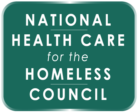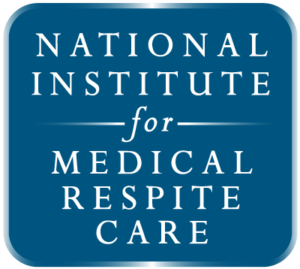Research: Community Health Workers (CHWs)
CHWs and Health Care for the Homeless
A Resource Guide for HCH Programs
Opening Doors
Integrating CHWs into a program increases job opportunities for people who have experienced homelessness. The CHW profession is a platform for vulnerable populations to gain work experience, professional skills, and personal development.
Once in the field, CHWs may find opportunities to transition to social work, nursing, and a number of other health related professions. Two CHWs who participated in the National HCH Council’s project went on to pursue advanced degrees in medicine and social work.
Employing CHWs not only provides jobs to community members but builds skills and opportunities in CHWS for future employment; ultimately this strengthens the community as a whole.[i]
In a national workforce study of community health workers, most organizations reported that they made the decision to hire CHWs because they learned about their successful utilization, believed they were cost effective, and their programs were more effective when using one-on-one outreach by CHWs.[ii]
Roles of a CHW
Listen to the recording:
Part of what makes a CHW such an effective member of a health care delivery team is the flexibility and diversity of what they can do within the clinic and in the community. There is a wide range of activities, tasks, and responsibilities a CHW can take on in the HCH setting.
The primary responsibilities of any CHW working in the HCH setting are to build trusting relationships with clients and to connect those clients to care, eliminating barriers and advocating for systemic changes along the way. The effectiveness of CHWs lies in their ability to gain access to hard to reach individuals and to patiently coach and support them as they work towards health care goals.[iii]
Generally, the role of the CHW includes the following[iv]
- Create connections between vulnerable populations and the health care system
CHWs in HCH programs work to guide patients experiencing homelessness toward more permanent primary care services outside the hospital system. Establishing a secure, trusted connection with a primary care provider can help prevent persons experiencing homelessness from reliance on Emergency Departments to meet primary care needs.
- Care coordination and care transitions for clients
The mobility of CHWs within their communities creates opportunities for more coordinated care. CHWs can serve as a liaison between multiple services and help with care coordination and care transitions for their clients. In the process of connecting clients with multiple services, CHWs build relationships with local agencies, advocating for their clients in the process. The more CHWs are involved in the community at large, the more effective the linkages between the community and the health care system become.[v]
- Assist clients with enrollment in programs and benefits for which they are eligible
In addition to connecting clients with health care services, CHWs work to connect clients with various social service programs for which they may be eligible. These programs and benefits can range from enrollment into SSI/SSDI to enrollment into a GED program.
- Encourage cultural competence among health care professionals serving vulnerable populations
CHWs’ lived experience of homelessness helps them build rapport with clients while also informing policies, procedures, and practices within the HCH clinic. CHWs have a unique insight into the perspectives of their clients which helps them identify barriers or unmet needs within the HCH clinic that may go unnoticed by HCH clinicians or administrators.
- Advocate for vulnerable populations within the health care system and the community at large
CHWs amplify the voices of the community within their HCH clinics thereby informing health professionals of the evolving needs and conditions of their target population.
Listen to the recording:
- Build capacity within the clinic and the community at large to address health issues
Staff at HCH clinics often operate with incredibly full workloads and are not able to meet all the needs of extremely high needs clients. Using CHWs to either support or expand existing services enables HCH programs to spend more time on their highest needs clients.
Section 3 will explore strategies and recommendations for hiring a CHW. Resources include sample job descriptions and suggested interview questions.
References
[i] Sinai Urban Health Institute. (January 2014). Best Practice Guidelines for Implementing and Evaluating Community Health Worker Programs in Health Care Settings. Retrieved from: http://www.sinai.org/sites/default/files/SUHI%20Best%20Practice%20Guidelines%20for%20CHW%20Programs.pdf
[ii] Health Resources and Services Administration: Bureau of Health Professionals. (March 2007). Community Health Worker National Workforce Study. Retrieved from: https://bhw.hrsa.gov/sites/default/files/bhw/nchwa/projections/communityhealthworkforce.pdf
[iii] Health Resources and Services Administration: Bureau of Health Professionals. (March 2007). Community Health Worker National Workforce Study. Retrieved from: https://bhw.hrsa.gov/sites/default/files/bhw/nchwa/projections/communityhealthworkforce.pdf
[iv] Rural Health Information Hub. (January 2016). Roles of Community Health Workers. Retrieved from: https://www.ruralhealthinfo.org/community-health/community-health-workers/1/roles
[v] Health Resources and Services Administration: Bureau of Health Professionals. (March 2007). Community Health Worker National Workforce Study. Retrieved from: https://bhw.hrsa.gov/sites/default/files/bhw/nchwa/projections/communityhealthworkforce.pdf

